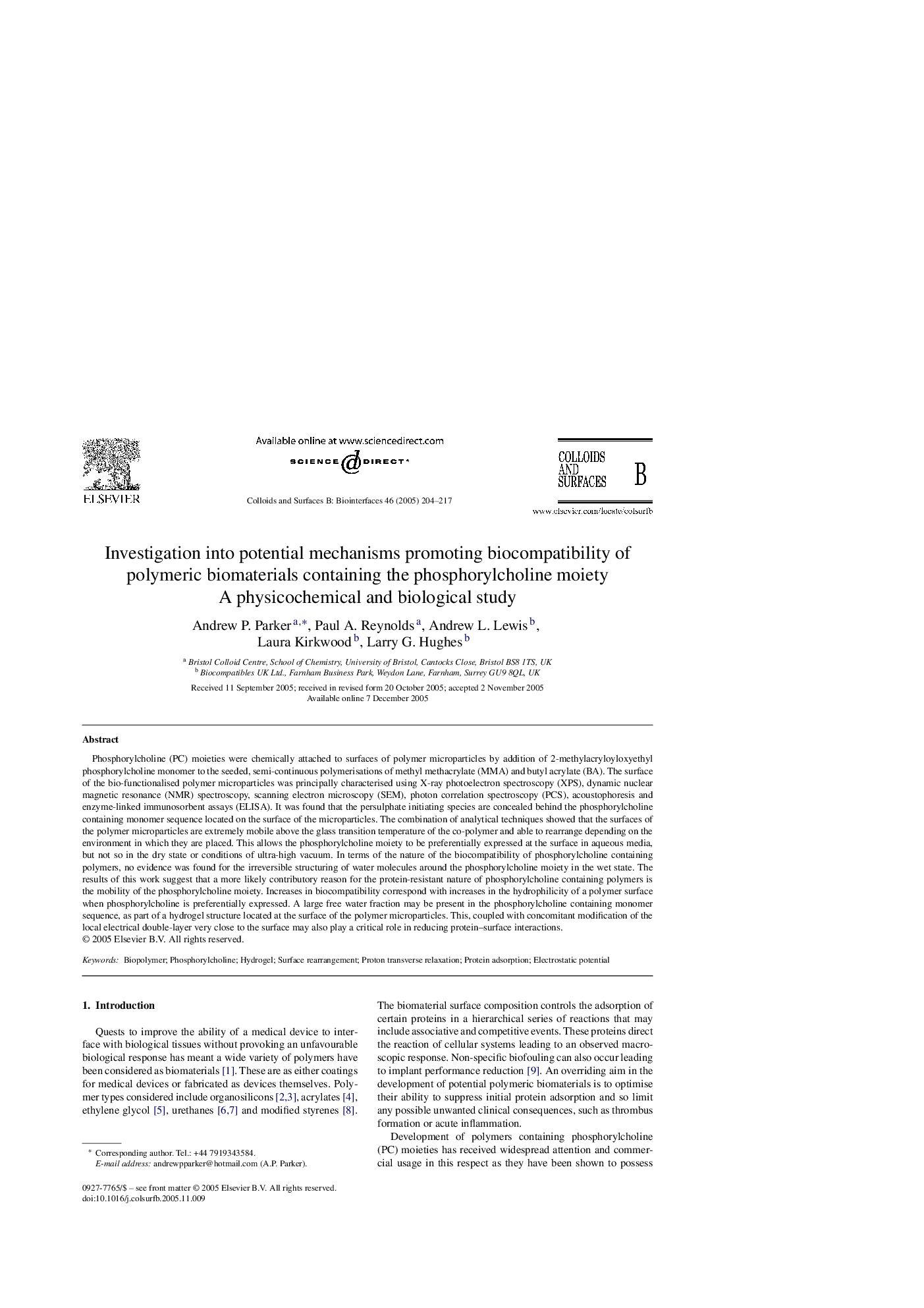| Article ID | Journal | Published Year | Pages | File Type |
|---|---|---|---|---|
| 10374912 | Colloids and Surfaces B: Biointerfaces | 2005 | 14 Pages |
Abstract
Phosphorylcholine (PC) moieties were chemically attached to surfaces of polymer microparticles by addition of 2-methylacryloyloxyethyl phosphorylcholine monomer to the seeded, semi-continuous polymerisations of methyl methacrylate (MMA) and butyl acrylate (BA). The surface of the bio-functionalised polymer microparticles was principally characterised using X-ray photoelectron spectroscopy (XPS), dynamic nuclear magnetic resonance (NMR) spectroscopy, scanning electron microscopy (SEM), photon correlation spectroscopy (PCS), acoustophoresis and enzyme-linked immunosorbent assays (ELISA). It was found that the persulphate initiating species are concealed behind the phosphorylcholine containing monomer sequence located on the surface of the microparticles. The combination of analytical techniques showed that the surfaces of the polymer microparticles are extremely mobile above the glass transition temperature of the co-polymer and able to rearrange depending on the environment in which they are placed. This allows the phosphorylcholine moiety to be preferentially expressed at the surface in aqueous media, but not so in the dry state or conditions of ultra-high vacuum. In terms of the nature of the biocompatibility of phosphorylcholine containing polymers, no evidence was found for the irreversible structuring of water molecules around the phosphorylcholine moiety in the wet state. The results of this work suggest that a more likely contributory reason for the protein-resistant nature of phosphorylcholine containing polymers is the mobility of the phosphorylcholine moiety. Increases in biocompatibility correspond with increases in the hydrophilicity of a polymer surface when phosphorylcholine is preferentially expressed. A large free water fraction may be present in the phosphorylcholine containing monomer sequence, as part of a hydrogel structure located at the surface of the polymer microparticles. This, coupled with concomitant modification of the local electrical double-layer very close to the surface may also play a critical role in reducing protein-surface interactions.
Related Topics
Physical Sciences and Engineering
Chemical Engineering
Colloid and Surface Chemistry
Authors
Andrew P. Parker, Paul A. Reynolds, Andrew L. Lewis, Laura Kirkwood, Larry G. Hughes,
